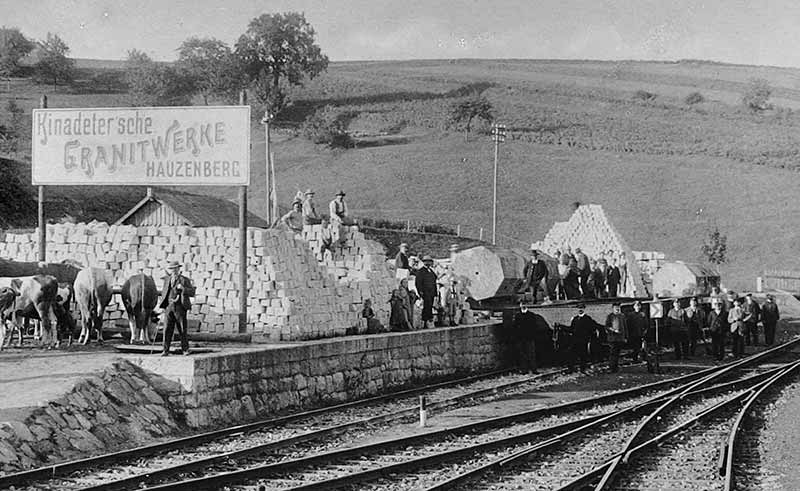It’s been quite an adventure already,but the first part has already been told: 18 huge granite columns had been contructed, each weighing 33 tons. Suddenly the owner, the Bavarian king, had no more use for them. And so, the columns, 17 to be exact, were left in the quarry. One of them had already been left behind during the first transportation attempt at Lieblmühle in 1846. This column was later used for the construction of a war memorial in the town of Thyrnau.
But back to the quarry at Hauzenberg’s Freudensee with its remaining 17 “monoliths”. In 1890, the Hauzenberg granite works owner Josef Kinadeter acquired this quarry. The adept businessman immediately appealed to the royal family in Munich, asking for these granite giants lying in the way to be removed because they were only an obstruction. The result was that Kinadeter was able to purchase the columns for a very low price.
What happened to the 17 “monoliths,” in the end?
The crafty Josef Kinadeter was able to sell two of them. They were shipped by train from Hauzenberg to Munich in 1908; the local railroad to Passau had been completed in 1904. In Munich, they were erected on Amalienstraße in 1910 as part of the construction of the new university, almost 70 years after they were made.
The remaining 15 columns were left in ruins among the rubble – and were eventually turned into paving stones!
Part of one column was found intact in the rubble. Today it stands at the entrance to the Granite Center.
The moral of the story: nothing was more important for the development of the granite industry than a good transportation infrastructure. And first and foremost, this included the railroad.
Switch the track lever and send two of the Hauzenberg monoliths on their way to Munich!
In the next chapter of our tour, you’ll learn more about the modern era of the local granite industry, which was set in motion by the dream team of railroad and paving stone. Emerge into the light and head straight down the stairs to the topographic model. See you then!
